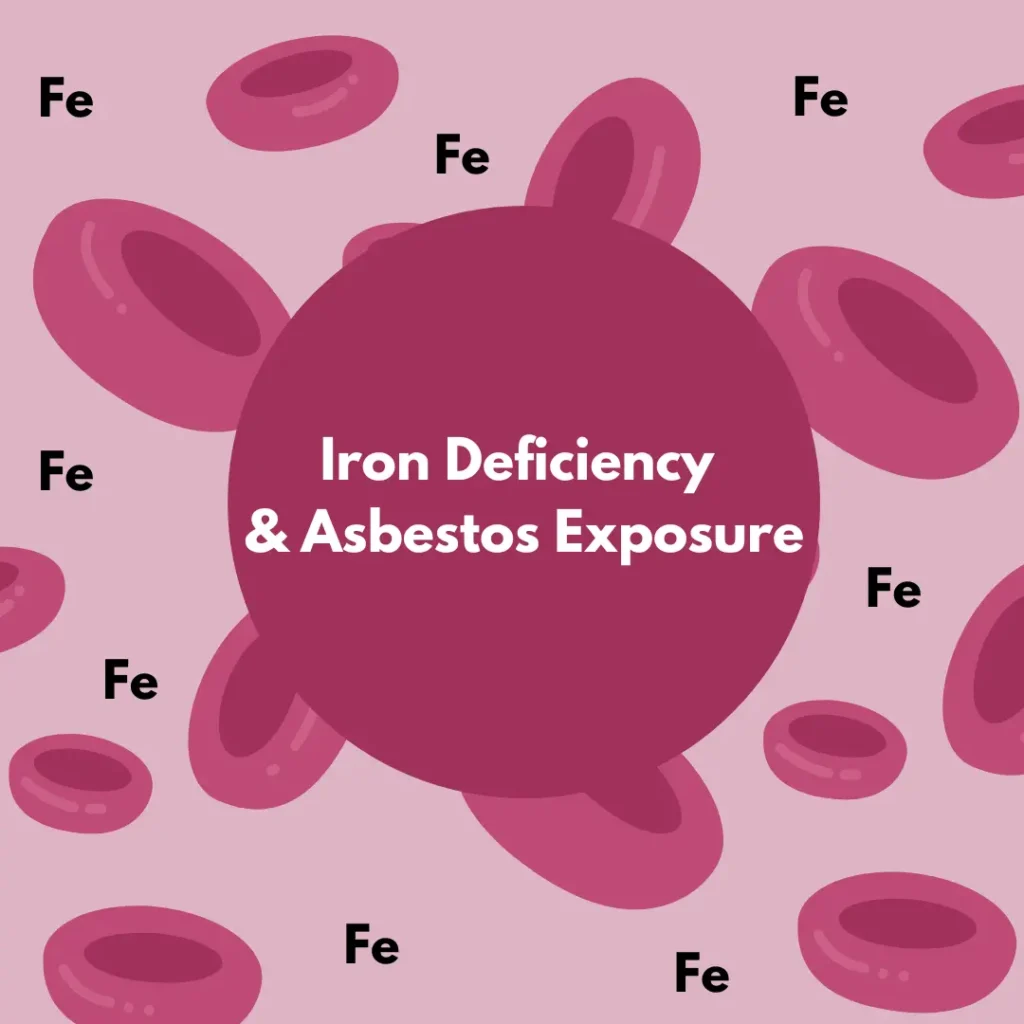Key takeaways: Asbestos fibers lodged within one’s lungs create an iron deficiency in the local
tissues. The body tries to compensate by increasing the movement of cellular channels and by
activating the immune response, but to no avail. Because iron is critical for transporting oxygen
around the body, the fact that asbestos disrupts iron levels is significant for a.) diagnosing
mesothelioma, b.) treating an iron deficiency as a symptom of mesothelioma to be addressed,
and c.) future treatment plans that might target asbestos’s tendency to attract iron.

How Does Asbestos Interact with Bodily Materials?
Asbestos is a naturally-occurring mineral known to be associated with mesothelioma. Because of
its fireproofing qualities, its durability, and its accessibility via mining, asbestos was frequently
used in buildings, industrial trades, vehicles, and protective clothing up until the early 1990s.
Researchers have established a definitive link between people that have worked and lived in
places with high concentrations of asbestos with mesothelioma and other asbestos-related
diseases. However, relatively little is understood about the interactions between asbestos and the
body, i.e., the pathogenesis following asbestos exposure and resulting in mesothelioma. Recent
studies are investigating the interactions between asbestos and different bodily
minerals/metals/compounds. Scientists have found that the electric charge of asbestos fibers (as
all compounds have a charge, even if that charge is ‘neutral’) seems to attract iron better than
host cells (extant bodily cells) can. By effect, the natural balance of iron in the body is thrown
off. The body tries to ameliorate the imbalance on its own: it shunts energy to open up cellular
transporters and activate the immune response. Cells in the respiratory tract also try to “take” the
iron from the asbestos fibers in an attempt to rectify their iron deficiency, which results in a
decreased likelihood that the body is able to expel the fibers–the fibers become crystallized and
more immobile through this process.
Because asbestos isn’t an antigen that can be killed or expelled by the body, these responses
become the characteristic “inflammatory” symptoms that mesothelioma patients present with.
The iron “response” likely contributes to the long latency period of mesothelioma onset.
Why Does it Matter that Iron is Disrupted?
Besides the bodily responses discussed previously, an iron deficiency has serious consequences
for the rest of the body. Iron is the main method of oxygen transportation and dispersion in the
body; it also plays a role in DNA synthesis and transporting electrons to stimulate movement and
micro energy transfer. When oxygen levels suffer at the hands of an iron deficiency, the entire
body suffers. Low oxygen can manifest as brain fog, difficulty with voluntary movements,
impacted digestion, cognitive decline, and shortness of breath.
Asbestos Exposure and Iron Deficiency – Implications for Future Diagnosis
Iron levels can be easily tested via blood work. New diagnostic techniques, like MESOMARK,
are taking advantage of protein and antigen-based features of mesothelioma. Ideally, healthcare
providers could implement a test that qualifies a baseline iron deficiency of mesothelioma
patients; this could be used as a facet of a new diagnostic model. Because the presence of
asbestos can’t be tested directly, an iron deficiency could be a working proxy for the presence of
asbestos. If asbestos fibers are identified even before a mesothelioma diagnosis, a patient’s
prognosis would benefit tremendously.
If you or a loved one has been diagnosed with mesothelioma, please call 1 (800)-505-6000. We
are here to help you navigate the legal process of filing a claim to receive compensation for your
mesothelioma diagnosis. We help mesothelioma victims and their families in Pennsylvania.
Sources:
https://www.ncbi.nlm.nih.gov/pmc/articles/PMC10419076/
https://www.ncbi.nlm.nih.gov/pmc/articles/PMC3999603/#:~:text=Iron%20is%20an%20essentia
l%20element